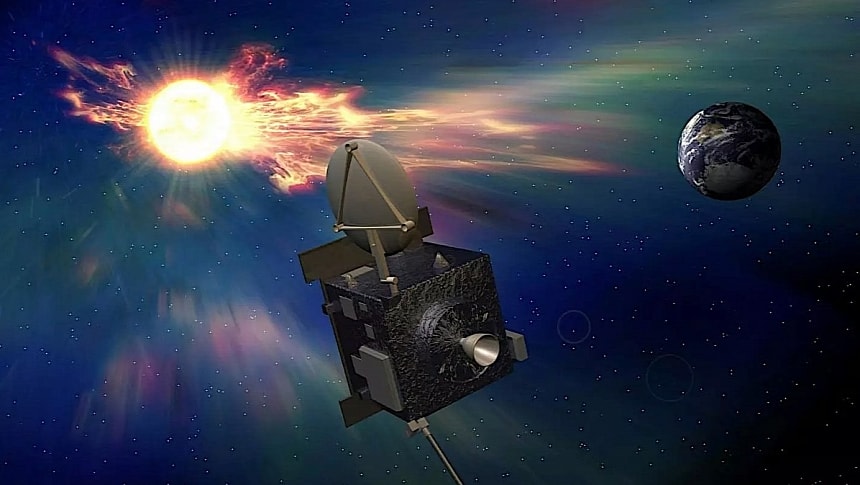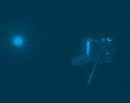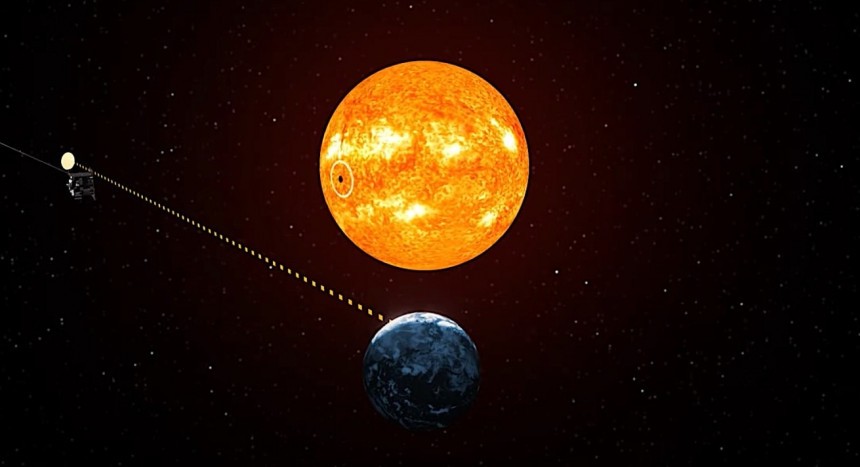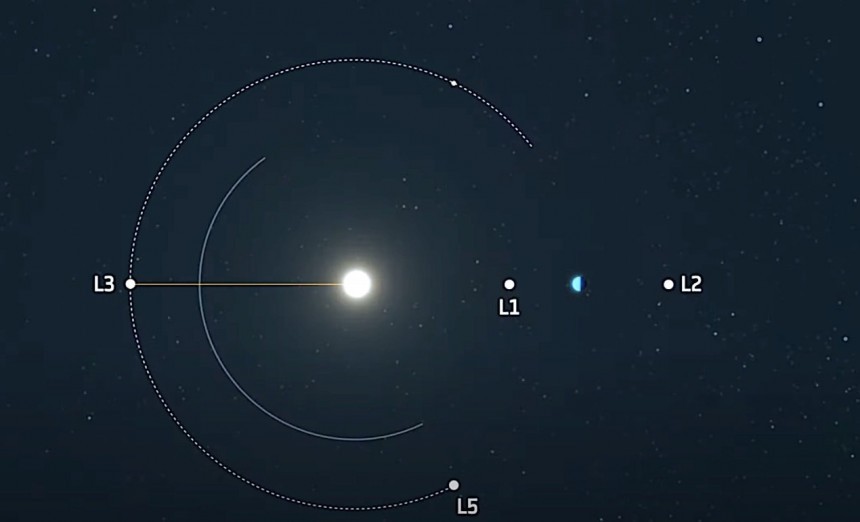Can you imagine how our life would be with no working satellites in space and electronics here on Earth? It would probably be something akin to hell, and if such a reality lasts long enough, it may as well push us back into the stone age. And like it or not, there are natural forces out there working to do just that.
It was a week or so ago from the time of writing when our world experienced a spectacle we don't get to see, well, pretty much never. Large swaths of the world's sky lit up in vivid colors as a massive solar storm hit our planet. It was an incredible spectacle of the Northern Lights, visible even in places that don't usually get them, and utterly harmless. But that may change in the blink of an eye.
The Northern Lights come to be when charged particles emitted by the Sun come in contact with the upper atmosphere of our planet, hitting it at tremendous speeds. Thanks to Earth's magnetic field, the shield that surrounds our world, these particles are pushed towards the Poles, and manifest themselves there as colorful ribbons of light.
But these charged solar particles also carry with them the potential to knock out satellites in orbit and power distribution networks here on Earth. That's why detecting them in time might help protect our society from potential harm.
We're pretty good at doing that, but there is a lot of room for improvement, and that's why the European Space Agency (ESA) announced this week an ambitious program meant to "provide more accurate warning of impending solar storms and coronal mass ejection."
The mission is called Vigil, and it is the agency's first in a program called Space Situational Awareness Space Safety Programme (SSA S2P). And this week we learned that aerospace giant Airbus was selected to build the spacecraft that will form the backbone of the mission.
Vigil is the successor of a plan for a space weather satellite the Europeans called until recently the Lagrange mission, first announced in 2022. The name, of course, had to do with the place where the satellite will be placed, but we'll get to that in a bit.
Vigil is essentially a space weather satellite, and as such it will be packed full with instruments intended to help it with this goal. The instruments, six of them in all, are supplied by global partners.
America is represented on this mission by a coronagraph developed by the U.S. Naval Research Laboratory and an extreme ultraviolet imager put together by NASA. The UK, on the other hand, will take part in this with a plasma analyzer from the Mullard Space Science Laboratory and a magnetometer from Imperial College London.
Finally, European company Leonardo is supplying the heliographic imager, while the Max Planck Institute is responsible for the spacecraft's photo-magnetospheric field imager.
The Vigil satellite will use all of the above tools to constantly look at the Sun and look for signs of trouble. It will do so from a location in space called the Lagrange point L5, one of the five places in our solar system where the gravitational forces of a two-body system (in this case the Earth and the Sun) cancel each other out and allow spacecraft to float in the same position pretty much indefinitely.
Vigil will be placed in the same orbit around the same as Earth, trailing behind our planet at a distance of 93.2 million miles (150 million km). According to the ESA specialists, this position will allow the spacecraft to "see the Sun as it rotates, and see the size and speed of solar weather heading towards the Earth."
Because of this location the mission can theoretically send people here on Earth a four to five days advance warning of incoming solar storms. The alerts should also be more accurate than anything currently at our disposal.
This timely warning, combined with data from other space weather satellites, should allow humans more than enough time to shut down critical systems such as power grids and mobile networks to protect them from potential harm.
Vigil will operate around the clock, thus making it Europe's first such space weather satellite. It is also the continent's first spacecraft to be positioned at the L5.
All of the above sounds exciting and useful, but it'll still be a long time until the hardware is launched into space. Airbus will work to design and build it for the next few years, as the mission isn't scheduled to lift off before 2031. At the time of writing, Vigil’s expected lifetime is about seven and a half years.
It is expected that aside from acting as a very early warning system Vigil will also give us a better understanding of the Sun, given how it's meant to stare at it with no interruption.
The Northern Lights come to be when charged particles emitted by the Sun come in contact with the upper atmosphere of our planet, hitting it at tremendous speeds. Thanks to Earth's magnetic field, the shield that surrounds our world, these particles are pushed towards the Poles, and manifest themselves there as colorful ribbons of light.
But these charged solar particles also carry with them the potential to knock out satellites in orbit and power distribution networks here on Earth. That's why detecting them in time might help protect our society from potential harm.
We're pretty good at doing that, but there is a lot of room for improvement, and that's why the European Space Agency (ESA) announced this week an ambitious program meant to "provide more accurate warning of impending solar storms and coronal mass ejection."
The mission is called Vigil, and it is the agency's first in a program called Space Situational Awareness Space Safety Programme (SSA S2P). And this week we learned that aerospace giant Airbus was selected to build the spacecraft that will form the backbone of the mission.
Vigil is essentially a space weather satellite, and as such it will be packed full with instruments intended to help it with this goal. The instruments, six of them in all, are supplied by global partners.
America is represented on this mission by a coronagraph developed by the U.S. Naval Research Laboratory and an extreme ultraviolet imager put together by NASA. The UK, on the other hand, will take part in this with a plasma analyzer from the Mullard Space Science Laboratory and a magnetometer from Imperial College London.
Finally, European company Leonardo is supplying the heliographic imager, while the Max Planck Institute is responsible for the spacecraft's photo-magnetospheric field imager.
The Vigil satellite will use all of the above tools to constantly look at the Sun and look for signs of trouble. It will do so from a location in space called the Lagrange point L5, one of the five places in our solar system where the gravitational forces of a two-body system (in this case the Earth and the Sun) cancel each other out and allow spacecraft to float in the same position pretty much indefinitely.
Vigil will be placed in the same orbit around the same as Earth, trailing behind our planet at a distance of 93.2 million miles (150 million km). According to the ESA specialists, this position will allow the spacecraft to "see the Sun as it rotates, and see the size and speed of solar weather heading towards the Earth."
This timely warning, combined with data from other space weather satellites, should allow humans more than enough time to shut down critical systems such as power grids and mobile networks to protect them from potential harm.
Vigil will operate around the clock, thus making it Europe's first such space weather satellite. It is also the continent's first spacecraft to be positioned at the L5.
All of the above sounds exciting and useful, but it'll still be a long time until the hardware is launched into space. Airbus will work to design and build it for the next few years, as the mission isn't scheduled to lift off before 2031. At the time of writing, Vigil’s expected lifetime is about seven and a half years.
It is expected that aside from acting as a very early warning system Vigil will also give us a better understanding of the Sun, given how it's meant to stare at it with no interruption.












